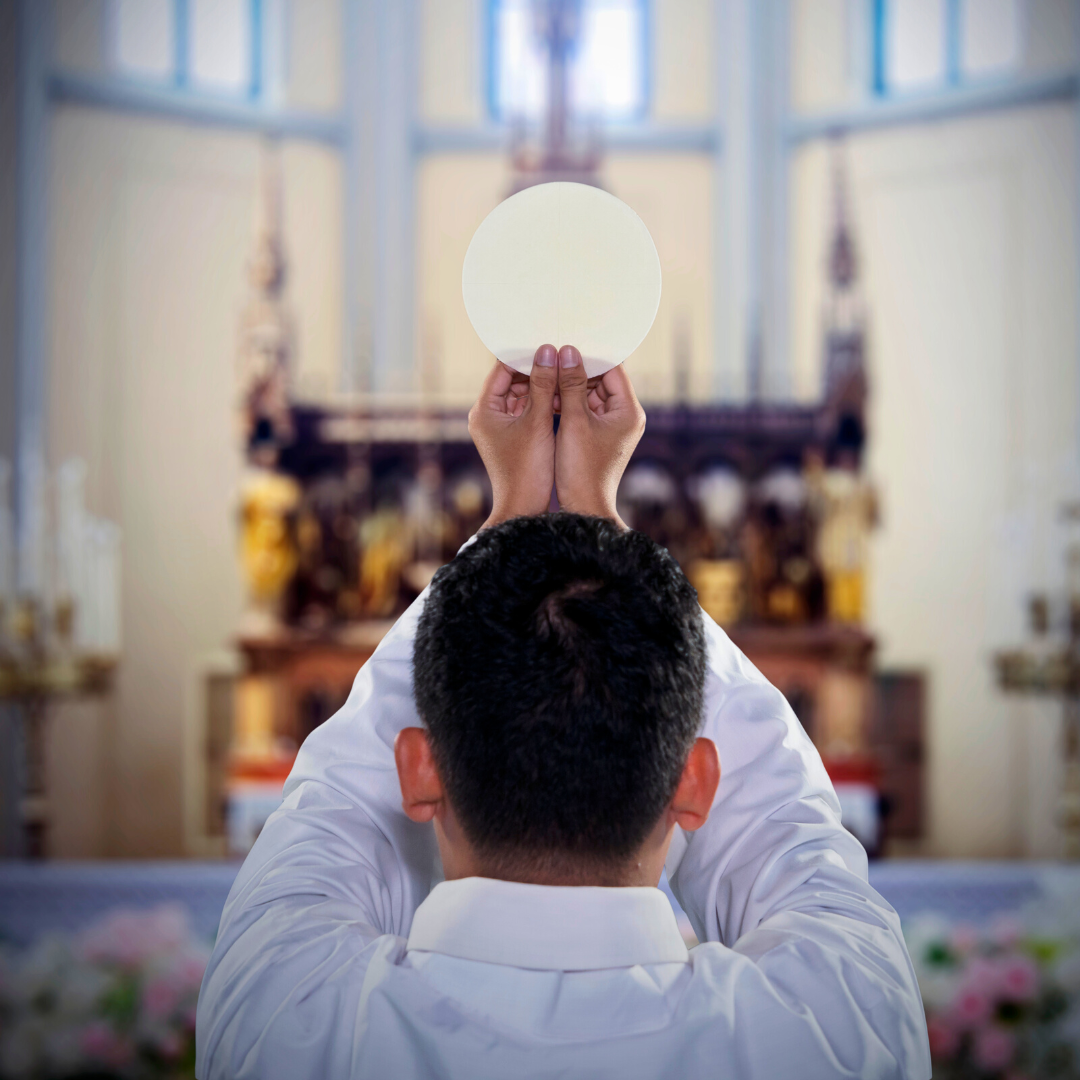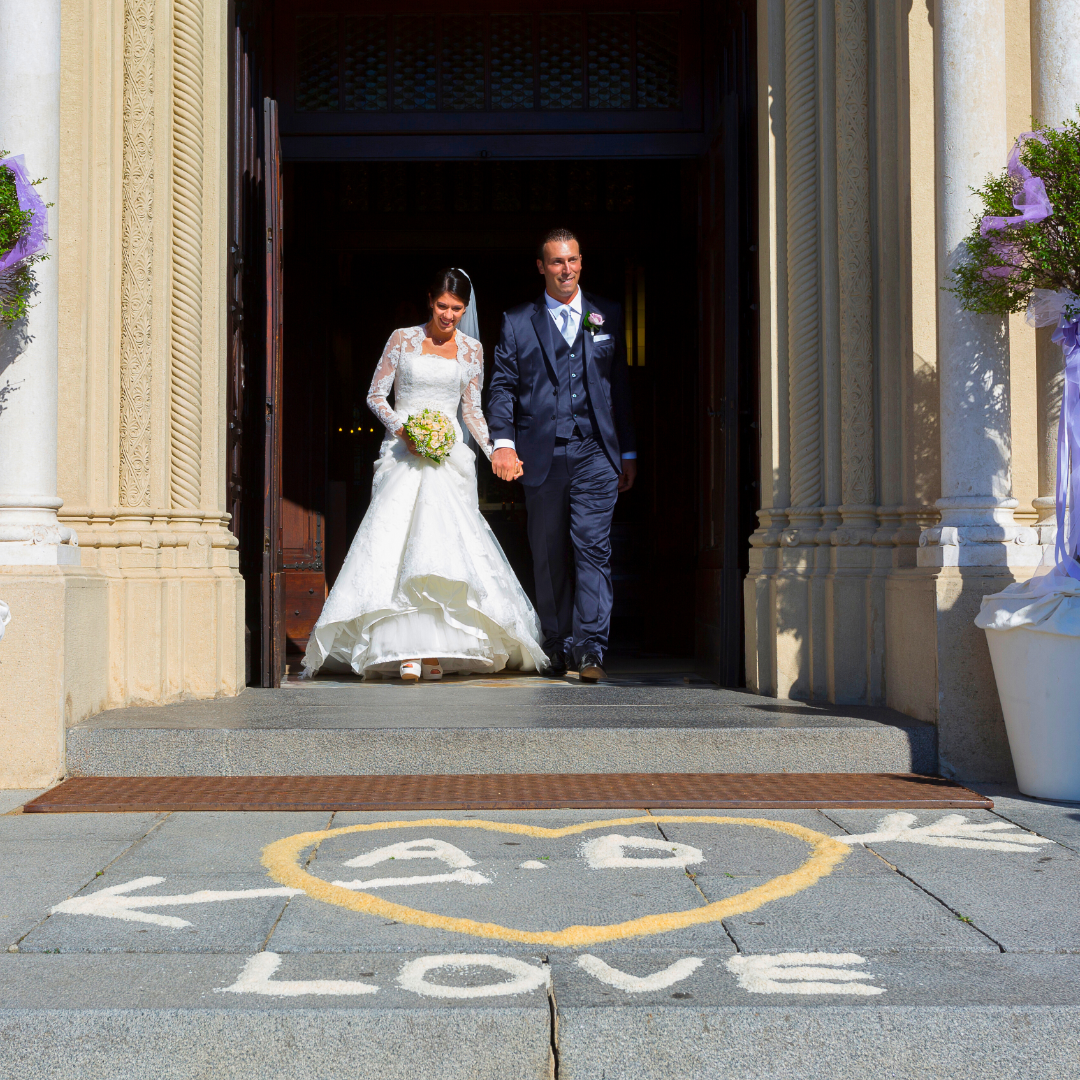
Cassandra Spellman considers how Christ’s sacrifice on the cross teaches us how to recognize the four marks of true love.
God has the most beautiful, perfect, and exquisite plan for love, specifically the life-giving love between a husband and wife. Celebrating Saint Valentine’s Day, a day all about love, is a good opportunity for us to reflect on God’s free, total, fruitful, and faithful love—and what it means for us, especially those called to married life.
What is love?
If you had to draw a picture of love, what would you draw?
Perhaps the best image of love is the crucifix. After all, the Bible tells us that God is love. Jesus’s sacrifice on the cross teaches us the four marks of true love:
- Love must be free. No one forced Jesus to die for us; He freely lay down His life out of love.
- Love must be total. Jesus didn’t hold anything back, but gave all of Himself.
- Love must be fruitful: it produces life. Jesus’s love on the cross opened the gates of heaven—eternal life—for us.
- Love must be faithful. Jesus stayed true to us to the end. His love is constant.
We can even better understand God’s plan for love by considering the Mass as a sacrament of love! Jesus (the Bridegroom) gives Himself totally to the Church (His bride). The book of Genesis describes that a man leaves his father and mother, cleaves to his wife in total commitment, and the two become one flesh. These steps of marriage happen between Jesus and His bride, the Church. Jesus left His heavenly Father and earthly Mother. On the cross, He gives Himself totally to His bride. Then the two become one flesh in the Eucharist.
There is a good reason why the Bible describes heaven as a wedding feast! Jesus is so madly in love with us that He isn’t content to be with us from afar. He wants to be in us. In the Eucharist Jesus plants the seeds of eternal life within our souls.

Body Language
God created us body and soul. Our bodies are holy and precious, temples of the Holy Spirit. Saint John Paul II talked about a theology of the body: that our bodies reveal God’s purpose for our lives. It is true that we have body language! Our bodies reflect what is happening inside us.
By looking at the body that God gave me, I understand my purpose, which is that I am made for others. I have told a toddler many times, “God didn’t give you hands to hit someone. God gave you hands to help others and to love them.” Our bodies are meant to give, to serve, to love others. A woman’s body, taken on its own, doesn’t make sense without a man’s body—and vice versa. They are different but complementary. They are for each other.
The Church shows the importance of our bodies. Every sacrament has matter and form: matter is the “stuff” of the sacrament (like water in Baptism) while form is the words spoken. In the sacrament of matrimony, what is the matter? The bodies of the bride and groom. The bride and groom are not officially married until they have done what is properly called the “marital act.” They must consummate, or complete, their vows.
Now, the terminology we use is important. For example, consider the difference between the words “relationship” and “courtship.” Many people use the word “relationship” to describe being boyfriend and girlfriend. Yet, when you think about it, relationship is an ambiguous term. Siblings, friends, or co-workers all have relationships. The term “courtship” makes a clearer delineation that this is a commitment between a man and woman who are discerning marriage.
So when we speak about this sacred action between a husband and wife, the term “marital act” (as opposed to “sex” or “making love”) feels more appropriate. It is a special, sacred, holy, and beautiful act between a husband and wife. It is their bodies saying: I belong completely to you. I give myself totally to you. I love you so much, I want to be one with you.
Through the marital act, the two become one. This is how God designed their bodies. In their wedding vows, a bride and groom expressed their lifelong commitment to love each other. In the marital act, their bodies speak this total gift of self.

Purposes of Spousal Love
So why did God give husbands and wives this incredible gift? First, the marital act is unitive: it unites the spouses. Every time they express their love through the marital act, a husband and wife are renewing their wedding vows. Their bodies are saying, “I do.” God designed the marital act to be something that physically feels good. It bonds the husband and wife, strengthening their love.
The second purpose is procreative: the marital act produces new life. Every marital act should be open to the blessing of children. God designed it so that a baby is literally conceived during an act of self-giving love. The powerful love between a husband and wife, through the grace of God, produces new life.
The marital act is for “babies and bonding,” and these cannot be separated. A baby needs a mother and father who are in a committed, lifelong marriage: this is best for children. That is why the marital act is only for marriage.
Some people don’t realize this is God’s design for love. Sometimes people fall into temptation and sin. We must always remember that, no matter what, God’s mercy is always greater than any sins we could commit. This is why, however, it is always important to pray for purity of heart and for chastity, because the devil tempts many people away from God’s loving plan.
Click to tweet:
God has a perfect plan for love: how do you live it out in your life? #CatholicMom
When we return to the four marks of true love, we see that the marital act between a husband and wife fulfills every point.
- Is it free? Yes! One of the questions posed to a couple about to exchange wedding vows is, “Have you come here to enter into marriage without coercion, freely and wholeheartedly?”
- Is it total? Yes! In the marital act, a husband and wife hold nothing back. They give every part of themselves to each other in an act of total self-gift.
- Is it fruitful? Yes! The marital act is open to new life in the blessing of children.
- Is it faithful? Yes! A husband and wife only give of themselves in this way to each other.
Giving Love
How am I using my body to love others? As we celebrate Saint Valentine’s Day this month, let’s magnify our love by imitating the free, total, fruitful, and faithful love God showers upon us, especially through the Eucharist. God has a perfect plan for love: how do you live it out in your life?

Copyright 2023 Cassandra Spellman
Images: Canva
About the Author

Cassandra Spellman
Cassandra Spellman is grateful to God for the gift of her Catholic faith and her vocation as wife and mother. She and her husband wrote The Shadows of Freedom series, a Christian dystopian trilogy. They blog about faith, marriage, philosophy, and literature at SpellmanBooks.com.


.png?width=1806&height=731&name=CatholicMom_hcfm_logo1_pos_871c_2728c%20(002).png)
Comments